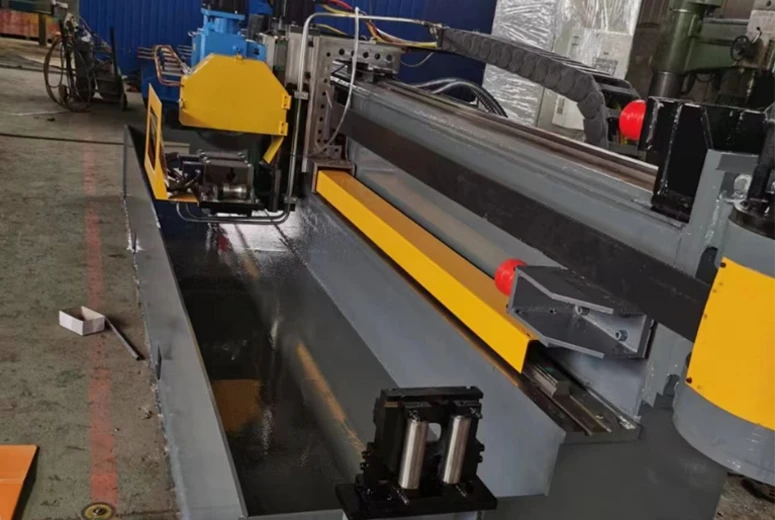combo welding machine
The Evolution and Benefits of Combo Welding Machines
Welding is an integral part of various manufacturing and construction industries, facilitating the joining of metals to create robust structures. Among the numerous types of welding equipment available, the combo welding machine has emerged as a favored choice for both amateur and professional welders. This versatile tool combines multiple welding processes into one machine, effectively streamlining operations and enhancing productivity. In this article, we will explore the evolution, benefits, and applications of combo welding machines.
The Evolution of Combo Welding Machines
The concept of combo welding machines can be traced back to the need for efficiency in welding practices. Traditionally, welders had to rely on separate machines for different processes, such as MIG, TIG, and stick welding. This separation often led to additional costs, increased setup times, and inefficient workspace utilization. As industries evolved, the demand for more versatile and compact solutions became evident. Thus, manufacturers began to develop combo welding machines that could seamlessly switch between different welding processes.
Modern combo welding machines are typically equipped with advanced technology, including digital displays, microprocessors, and automatic heat settings. These innovations not only make them easier to operate but also enhance the quality of welds produced, catering to various materials and thicknesses.
Benefits of Combo Welding Machines
1. Versatility One of the most significant advantages of combo welding machines is their versatility. With the ability to perform different welding processes like MIG, TIG, and stick welding, these machines can accommodate a wide range of projects. Whether working with thin sheets or thicker metals, combo welding machines can be adjusted to suit specific requirements.
combo welding machine

2. Cost-Effective Investing in multiple welding machines can be financially burdensome. Combo welding machines consolidate several technologies into one unit, reducing the initial investment and saving on maintenance costs. This cost-effectiveness is especially beneficial for small businesses and DIY enthusiasts who may not have a large budget.
3. Space-Saving In many workshops, space is at a premium. Combo welding machines take up less room compared to having multiple standalone machines. This compact design allows for a more organized workspace, minimizing clutter and enhancing workflow.
4. Ease of Use Many combo welding machines are designed with user-friendly interfaces, making them accessible to beginners and experienced welders alike. With adjustable settings and clear instructions, users can quickly learn to operate the machine effectively.
5. Quality of Work The seamless transition between different welding methods enables users to achieve high-quality welds consistently. Manufacturers often include advanced features like automatic settings that adjust the welding parameters based on the user's selections, leading to optimal results.
Applications of Combo Welding Machines
The applications of combo welding machines are numerous and varied. They are commonly used in automotive repair, art and sculpture fabrication, plumbing, and construction. Moreover, they are popular among hobbyists engaged in metal arts, providing an affordable yet powerful solution for their creative projects.
In conclusion, combo welding machines represent a significant advancement in welding technology. Their versatility, cost-effectiveness, space-saving design, ease of use, and ability to produce high-quality welds make them an invaluable asset in various industries. As technology continues to evolve, we can expect these machines to become even more sophisticated, further enhancing the capabilities of welders worldwide. Whether you are a professional or a DIY enthusiast, investing in a combo welding machine could be a game-changer in your welding process.
-
High Frequency Straight Seam Welded Pipe Production Line-BzZhou Xinghua Machinery Equipment Manufacturing Co., LTD.|Precision Welding, High EfficiencyNewsJul.30,2025
-
High Frequency Straight Seam Welded Pipe Production Line|BzZhou Xinghua|Precision Welding&EfficiencyNewsJul.30,2025
-
High Frequency Straight Seam Welded Pipe Production Line - BzZhou Xinghua|Precision Engineering&EfficiencyNewsJul.30,2025
-
High-Frequency Straight Seam Welded Pipe Production Line-BzZhou Xinghua Machinery Equipment Manufacturing Co., LTD.NewsJul.30,2025
-
High-Frequency Straight Seam Welded Pipe Production Line-BzZhou Xinghua Machinery Equipment Manufacturing Co., LTD.|Precision Manufacturing, High EfficiencyNewsJul.30,2025
-
High Frequency Straight Seam Welded Pipe Production Line-BzZhou Xinghua Machinery Equipment Manufacturing Co., LTD.|Precision Steel Pipe Manufacturing&Industrial EfficiencyNewsJul.29,2025


